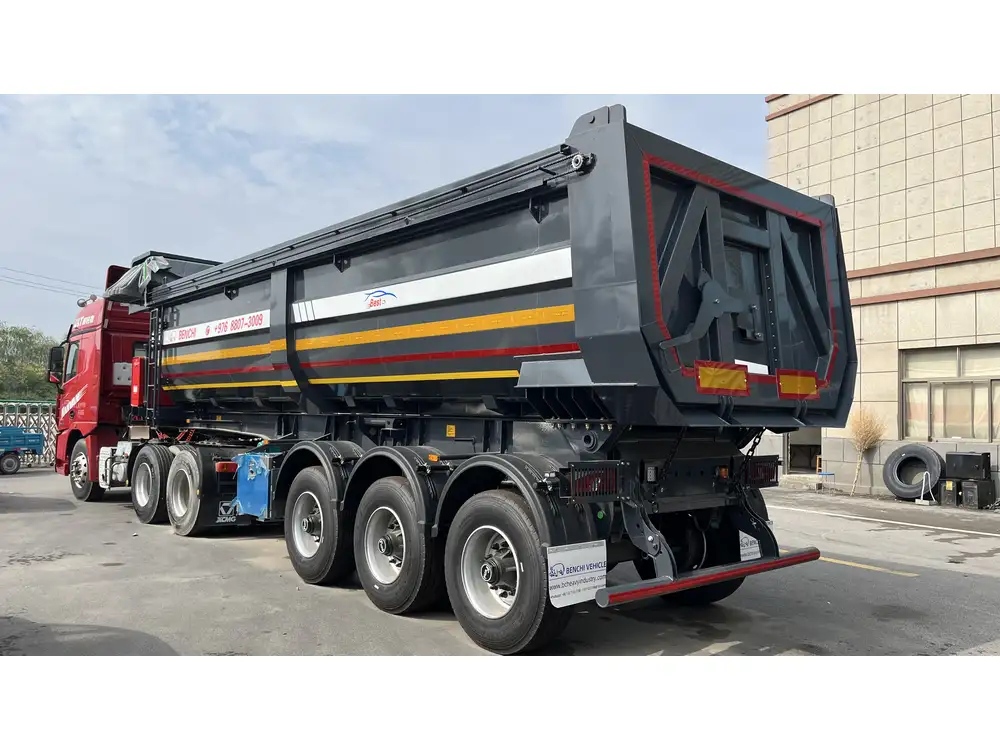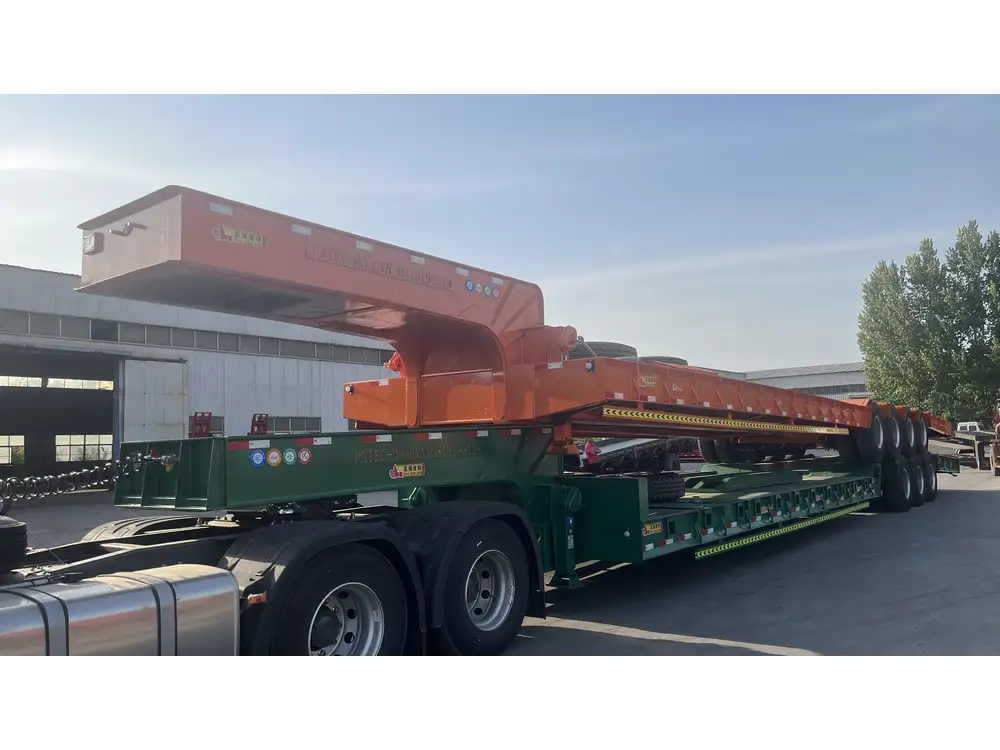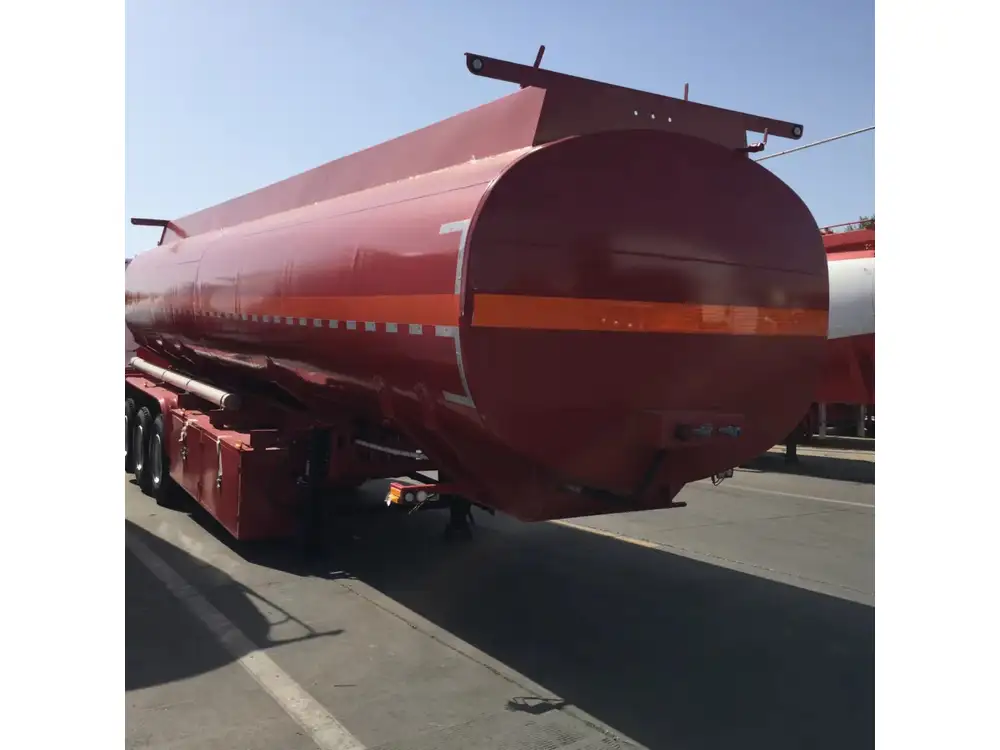Semi-trailers are a critical component of the logistics and transportation industry, serving as the backbone for freight movement in numerous sectors. However, understanding the dimensions and specifications, particularly the width, is crucial for various stakeholders, including manufacturers, logistics companies, regulatory bodies, and drivers. In this article, we will explore the standard widths of semi-trailers, the regulations governing these dimensions, their implications in fleet management, and how they compare to other types of trailers.
Key Dimensions of Semi-Trailers
Standard Width of Semi-Trailers
The standard width for a semi-trailer is typically 8.5 feet (102 inches). This dimension adheres to regulations put forth by the Federal Highway Administration (FHWA) in the United States. Understanding this standard is essential for ensuring compliance with transportation laws and regulations.
| Trailer Type | Standard Width |
|---|---|
| Semi-Trailer | 8.5 feet (102 inches) |
| Flatbed Trailer | 8.5 feet (102 inches) |
| Enclosed Trailer | 8.5 feet (102 inches) |
| Specialized Trailers | Up to 10 feet (120 inches, subject to permits) |

Variations Based on Use
Despite the standard width, various configurations exist based on the intended use:
- Flatbed Trailers: These often match the standard width of 8.5 feet but may vary slightly depending on the cargo.
- Enclosed Trailers: Typically adhere to the 8.5-foot standard but can be wider for specialized cargo, such as cars or machinery.
- Specialized Trailers: Certain trailers designed for oversized loads can measure up to 10 feet in width, requiring special permits and routing considerations.
Regulatory Standards and State Variations
Federal Regulations
The Federal Highway Administration sets forth regulations governing the dimensions of commercial vehicles, including semi-trailers. The maximum legal width on interstate highways is 102 inches, fostering a uniform standard across the nation. However, individual states may have specific regulations that allow for variations.

State-Level Regulations
Certain states permit wider configurations under special circumstances. For example, oversized loads may receive permits to operate with widths up to 120 inches. Understanding these state-specific rules is paramount for logistics companies operating in multiple regions.
| State | Special Width Regulations |
|---|---|
| California | Permits for loads up to 120 inches |
| Texas | Allows for certain oversize permits |
| Florida | Enforces standard 102-inch width |
Impact of Width on Fleet Management
Operational Efficiency
The dimensions of a semi-trailer can significantly impact its operational efficiency. Wider trailers, while capable of carrying more goods, can present challenges:
- Aerodynamics: Wider trailers can experience increased drag, affecting fuel efficiency. Operators must balance load capacity with fuel costs.
- Maneuverability: Wider trailers may be more challenging to maneuver, especially in tight delivery locations. Drivers need to account for the overall width when navigating urban environments or loading docks.

Load Capacity
Understanding the width also plays a crucial role in determining the load capacity of a semi-trailer. The larger the width, the more space available for cargo. However, it’s important to consider the height and length constraints imposed by regulatory measures, which can limit the total weight of the trailer and the vehicle.
| Width | Load Capacity (approx.) |
|---|---|
| 8.5 feet | Up to 48,000 lbs |
| 10 feet | Typically over 50,000 lbs |
Comparison with Other Trailers
Benefits and Drawbacks
Understanding the standard width of semi-trailers is essential, but how does it compare to other trailer types?
| Trailer Type | Standard Width | Advantages | Disadvantages |
|---|---|---|---|
| Semi-Trailer | 8.5 feet (102”) | Versatile, compliant with most regulations | Limited cargo for oversized loads |
| Flatbed Trailer | 8.5 feet (102”) | Easy loading/unloading; versatile for various cargo | Less protection from environmental factors |
| Enclosed Trailer | 8.5 feet (102”) | Protects cargo from elements; secure | More weight impacts fuel efficiency |
| Specialized Trailers | Up to 10 feet | Ability to transport oversized cargo | Requires special permits; higher operational costs |

Choosing the Right Semi-Trailer
When selecting the appropriate semi-trailer, consider the following factors based on the operational needs of your business:
- Cargo Type: The nature of your cargo will heavily influence the trailer width required. Fragile items may benefit from enclosed trailers, while heavy machinery will necessitate a flatbed.
- Transportation Routes: Analyze delivery routes and check for state regulations regarding maximum widths. This planning helps mitigate the risk of fines and operational delays.
- Weight Regulations: Ensure compliance with weight limits as specified by federal and state regulations. Exceeding these limits can lead to significant penalties and may disrupt shipping schedules.
Addressing User Concerns
How Does Trailer Width Affect Compliance?
Non-compliance with trailer width regulations can lead to substantial legal and financial repercussions. Companies must conduct thorough route planning and stay informed about changes in state and federal regulations. Using advanced route planning software can assist in identifying potential obstacles related to width restrictions.

What Are the Implications of Overwidth Loads?
Transporting loads that exceed the standard width can significantly increase cost and complexity. Companies must apply for permits, which often include additional fees and specific routing that may avoid certain areas or structures. Furthermore, transporting an oversize load can necessitate the use of pilot vehicles, thereby increasing labor costs.
What Should Companies Consider When Scaling?
When scaling fleet operations, it is vital to evaluate the width of trailers in relation to the company’s growth trajectory. Wider trailers can potentially increase cargo capacity but may lead to increased costs associated with fuel and regulatory compliance. A comprehensive analysis measuring operational costs versus potential revenue boosts is necessary.
Conclusion: Navigating the Complexities of Semi-Trailer Widths
Ultimately, understanding the standard width of semi-trailers—8.5 feet (102 inches)—is fundamental to navigating the complexities of the transportation industry. With varying types of trailers available, and distinct regulatory considerations across states, manufacturers and operators must optimize their trailer selections based on cargo, routes, and compliance requirements.
Engaging in thorough research and planning allows logistics companies to enhance operational efficiency while adhering to regulations. As the industry continues to evolve, remaining informed about dimensions, regulations, and equipment capabilities is critical to achieving success in transporting goods across the nation.
In the dynamic world of logistics, where every inch matters, a strategic approach will determine the difference between seamless operations and unforeseen challenges. Evaluating the nuances of semi-trailer widths will empower professionals to make informed decisions, ultimately leading to more effective and compliant transportation solutions.



